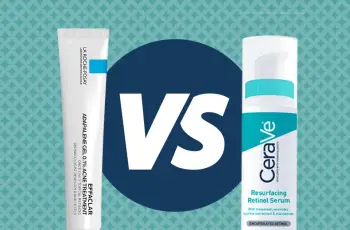
Targeting Cellular Senescence in Skin Aging: The Future of Anti-Aging Skincare
As the science behind skincare becomes increasingly sophisticated, one area gaining serious attention is cellular senescence—a key driver of visible skin aging.
Understanding and targeting senescent cells may be the most advanced strategy we have to combat wrinkles, loss of elasticity, and dull, fragile skin.
This article explores what cellular senescence is, how it affects your skin, what causes it, and most importantly, which skincare ingredients are proven to reduce senescent cells and restore youthful skin function.
What Is Cellular Senescence?
Cellular senescence is a state in which cells permanently stop dividing but do not die.
These cells are often referred to as “zombie cells” because they are biologically inactive in terms of reproduction but remain metabolically active—secreting inflammatory compounds and damaging nearby healthy cells.
In the skin, senescent keratinocytes and fibroblasts lose their ability to function properly.
They contribute to skin thinning, loss of collagen, and chronic inflammation, all of which result in visible aging.
How Does Cellular Senescence Accelerate Skin Aging?
Senescent cells promote skin aging through a process called inflammaging—a low-grade, chronic inflammation caused by their secretions.
These secretions, collectively called the Senescence-Associated Secretory Phenotype (SASP), include:
Matrix Metalloproteinases (MMPs) – which break down collagen and elastin
Cytokines and chemokines – pro-inflammatory molecules that damage neighboring cells
Reactive Oxygen Species (ROS) – free radicals that accelerate aging
Extracellular vesicles (EVs) – including microRNAs that can alter gene expression in nearby cells
These harmful substances not only damage the extracellular matrix (ECM)—which gives skin its structure—but also increase inflammation and interfere with skin regeneration, leading to wrinkles, dullness, and skin laxity.
Understanding the Skin Cell Lifecycle
To fully grasp the impact of senescent cells, it’s important to understand the five phases of a skin cell’s life:
Stem Cells – Undifferentiated and capable of becoming any type of skin cell.
Proliferating Cells – Actively dividing cells that generate new skin.
Differentiated Cells – Specialized cells that carry out specific skin functions.
Senescent Cells – Damaged, non-dividing cells stuck in limbo, secreting inflammatory factors.
Apoptotic Cells – Programmed cell death; a clean and necessary process to remove old or damaged cells.
Unlike apoptotic cells, senescent cells are not eliminated from the body. They accumulate over time, especially as the immune system and natural cleanup processes like autophagy decline with age.
What Causes Cellular Senescence?
Multiple biological and environmental factors can push cells into senescence, including:
Chronological aging
UV radiation and pollution
Oxidative stress and free radical exposure
Shortened telomeres
Mitochondrial dysfunction
TP53 gene activation (a tumor suppressor gene)
Loss of SIRT-1 activity (a longevity-associated protein)
Reduced autophagy (the process by which cells “clean house”)
These triggers cause DNA damage, inhibit mitochondrial function, and disrupt cellular repair mechanisms—pushing cells into a dysfunctional, inflammatory state.
How Can Skincare Target Senescent Cells?
Recent studies suggest that certain topical ingredients can prevent, reduce, or even eliminate senescent cells—offering a promising approach to anti-aging beyond hydration and collagen support.
These strategies fall into three categories:
Preventing Senescence – by shielding the skin from environmental damage (sun, pollution, etc.)
Reducing Existing Senescent Cells – by promoting autophagy or activating longevity pathways
Restoring Function – by rejuvenating cellular metabolism and reducing inflammation
Top Ingredients That Help Decrease Cellular Senescence
Here are some of the most promising cosmeceutical ingredients shown to target senescent cells and reverse signs of skin aging:
1. Resveratrol
A natural polyphenol found in red grapes.
Activates SIRT-1, the “longevity gene” that promotes mitochondrial health and autophagy.
Also known to have antioxidant and anti-inflammatory benefits.
2. Melatonin
A hormone with antioxidant and DNA-protective properties.
Improves mitochondrial function and has shown promise in reducing oxidative stress and senescence markers.
3. Aquatide™ (Heptasodium Hexacarboxymethyl Dipeptide-12)
Promotes autophagy—the cellular “clean-up” process.
Helps remove damaged components and may aid in the clearance of senescent cells.
Also supports barrier repair and hydration.
4. Exosomes
Small extracellular vesicles that deliver functional RNA, microRNA, and proteins to nearby cells.
Shown to reduce senescent markers in skin and stimulate regeneration.
Featured in innovative products like Plated SkinScience Intense Serum.
5. Crepidiastrum Denticulatum Extract (Pollux CD™)
A plant-derived antioxidant and anti-inflammatory ingredient.
Demonstrates effects on reducing cellular stress and may support autophagy and mitochondrial function.
6. Saururus Chinensis
Traditional medicinal herb with anti-inflammatory and antioxidant effects.
Helps suppress SASP factors and protect ECM integrity.
7. Ulmus Davidiana
Korean elm extract known for calming inflammation and supporting skin regeneration.
May indirectly assist in slowing senescence-related inflammation.
Skincare Products That Target Cellular Senescence
Several advanced skincare formulations now incorporate these senescence-targeting ingredients. One standout is:
🧴 Plated SkinScience Intense Serum
Contains exosomes harvested from ethically sourced human stem cells.
Studies suggest this serum can significantly reduce the number of senescent cells in aging skin.
Also supports collagen production and skin firmness.
More brands are expected to launch products targeting senescence as research in this area continues to grow.
Can You Prevent Cellular Senescence in the First Place?
Yes—and prevention may be the most effective long-term strategy. Here’s how:
Daily Sunscreen Use: Protects against UV-induced senescence.
Antioxidants: Neutralize ROS and reduce oxidative stress (e.g., Vitamin C, green tea, niacinamide).
Anti-inflammatory Agents: Help suppress chronic low-grade inflammation.
Pollution Protectants: Ingredients like ectoin or resveratrol help combat environmental triggers.
By protecting skin from external damage and maintaining internal cellular health, you can significantly slow the accumulation of senescent cells.
What Happens When Senescent Cells Build Up?
Accumulated senescent cells degrade the skin from the inside out. Their inflammatory secretions:
Disrupt collagen and elastin synthesis
Inhibit DNA repair
Interfere with normal cell turnover
Thicken the stratum corneum, leading to dullness
Thinning of the dermis, contributing to fragile, wrinkled skin
They also impair communication between healthy cells via altered extracellular vesicles (EVs), leading to a breakdown in skin’s regenerative functions.
Senescence vs Apoptosis: Why It Matters
It’s important to distinguish senescence from apoptosis:
Apoptosis is a healthy, programmed cell death. Damaged cells are eliminated to protect surrounding tissues (e.g., from cancer).
Senescence, however, is a “stuck” state—cells are damaged but not eliminated. They persist and contribute to tissue dysfunction and aging.
Promoting autophagy and cellular clearance mechanisms can help shift senescent cells toward apoptosis or repair.
The Future of Anti-Aging is Cellular
As our understanding of cellular biology evolves, skincare is moving beyond superficial fixes and addressing aging at the root cellular level.
Targeting senescent cells opens the door to real rejuvenation—not just cosmetic improvement.
New research, including emerging studies on senolytics (drugs or compounds that eliminate senescent cells), is revolutionizing how we think about aging and how we formulate skincare.
Take the Next Step: Customize Your Anti-Senescence Skincare
Ready to treat your skin based on science, not guesswork?
🎯 Take the Skin Type Solutions quiz to build a personalized skincare routine that addresses your unique needs—including senescence, inflammation, and more.
Stay Updated
The science of cellular senescence in skincare is still emerging.
Follow us on YouTube and social media for interviews with experts like Dr. Leslie Baumann and Dr. Wyles, who are at the forefront of research on inflammaging and senolytic skincare.


